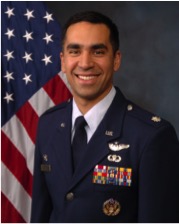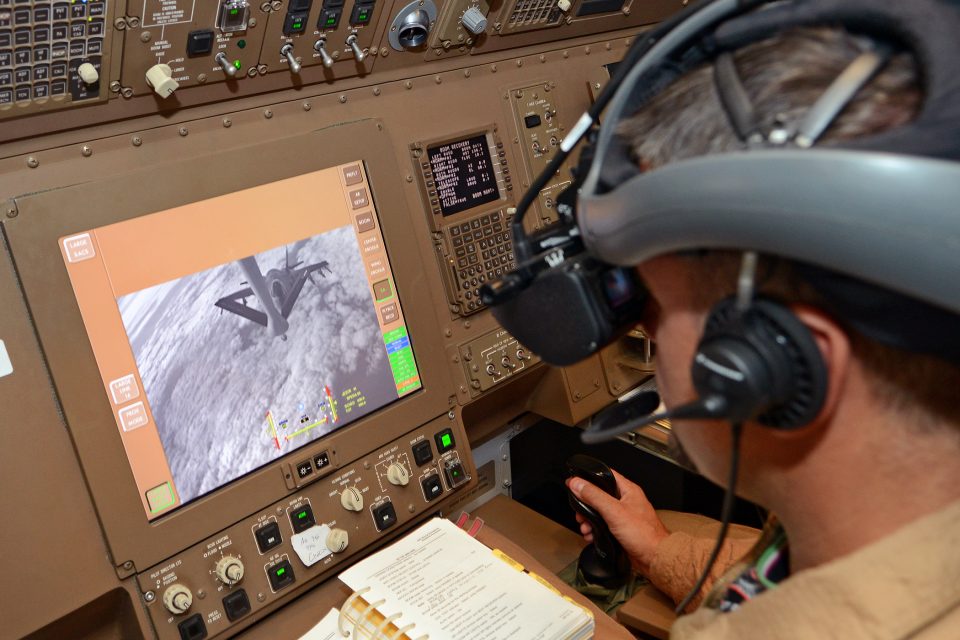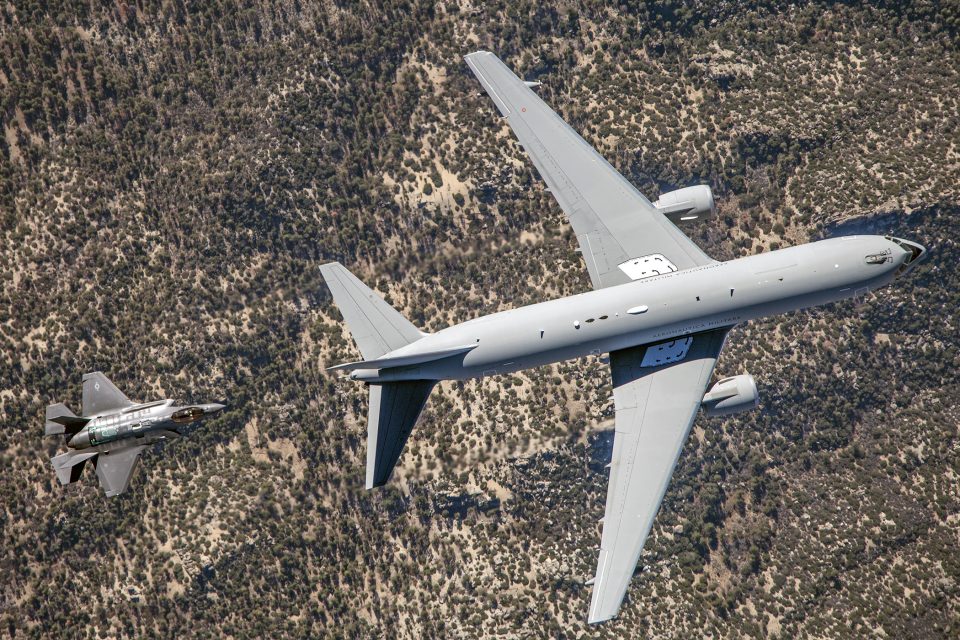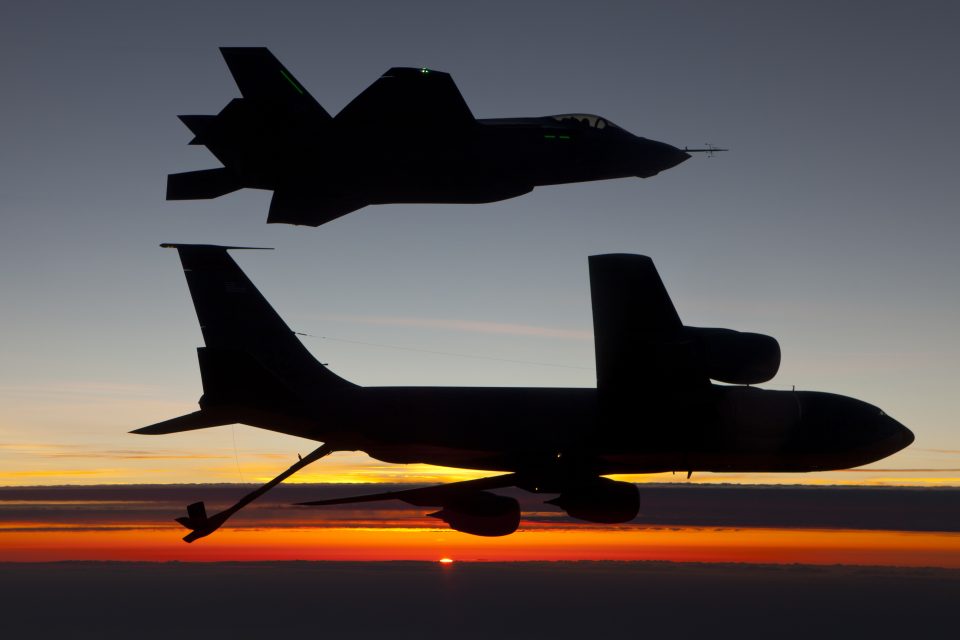2016-03-24 By Edward Timperlake and Robbin Laird
An organization is known by the individuals that make it successful, and there is no more demanding organization than a Combat Fighter Squadron.
To become a successful fighter pilot it all begins with their first tour Squadron experience in beginning their personal journey to make a difference for those yet to come.
The legacy of an organization and a base can also provide insights since it may be a cliché but the past is prologue.
We were fortunate to interview one such Fighter Pilot. Lt Col Raja Chari, Director of the F-35 Integrated Test Force and Commander of the 461st Flight Test Squadron (FTS), Edwards Air Force Base, California.
He is a senior pilot with combat experience and more than 2,000 flying hours in the F-35A/B/C, F-15C/D/E, F-18, F-16, T-38A/C, T-37, and T-6.
Following undergraduate pilot training at Vance AFB, OK and F-15E training at Seymour Johnson AFB, NC, Lt Col Chari served as an F-15E Evaluator Pilot and Chief of Standardization and Evaluation at Elmendorf AFB, AK and RAF Lakenheath, United Kingdom, where he gained operational experience in the Pacific and flew combat missions in Operation IRAQI FREEDOM.
Lt Col Chari served at Eglin AFB executing flight test on F-15 aircraft to include the introduction of the first Active Electronically Scanned Array (AESA) radar on the F-15E.
He is also a graduate of the U.S. Army Command and General Staff College. Lt. Col Chari’s full bio is at end of the article)
His command has a storied combat history.
The 461 FTS squadron performs flight testing on the F-35 Lightning II.
In the early days of WW II, the 461st Squadron was deployed to England aboard the RMS Queen Elizabeth and served in combat as a part of the VIII Fighter Command from October 1943 to May 1945.
The 461st ran operations in preparation for the invasion of the European continent; they supported the landings in Normandy and the Allied drive across France and Germany.
The squadron flew P-47 Thunderbolts until replaced by P-51 Mustangs in November 1944. Aircraft of the 461st were identified by a magenta/blue diamond pattern around their cowling, carrying fuselage code “QI”.
From October 1943 until January 1944, the squadron operated as escort for B-17 Flying Fortress/B-24 Liberator bombers that attacked industrial areas, missile sites, airfields and communications.
Fighters from the 461st engaged primarily in bombing and strafing missions after 3 January 1944. Its targets included U-boat installations, barges, shipyards, aerodromes, hangars, marshaling yards, locomotives, trucks, oil facilities, flak towers and radar stations.
The 461st bombed and strafed the Arnhem, Netherlands area on 17, 18 and 23 September 1944, in order to neutralize enemy gun emplacements that were providing support to Allied ground forces during Operation Market-Garden. In early 1945, the squadron’s P-51 Mustangs clashed with German Me 262 jet aircraft.
The squadron flew its last combat mission, escorting B-17’s dropping propaganda leaflets, on 7 May 1945.
As for the legacy of a military base, driving on Yaeger Blvd, Edwards AFB to interview Lt. Col Chari says all one needs to know about the storied history of USAF high performance testing of the future aircraft that will continue to dominate combat aviation in the 21st Century.
Question: When did you come to the command?
Answer: About nine months ago.
I came from the Rapid Capability Office where we focused on an accelerated acquisitions process for urgent operational needs.

Question: What were your expectations when you came to the command about the program?
Answer: I knew very little about the F-35 programmatics when I was informed I was going to take command.
With all the negative press out there, my first task was to get ground truth on the program.
When I went to Eglin to learn to fly the plane, I saw a lot of F-35s on the tarmac, and that was a key ground truth – the program is way beyond getting out the gate.
Indeed, when I got here [to Edwards], we were on the cusp of IOC for the USMC F-35; that was a launch point for me as well.
The ship has sailed on the F-35 program.
We have this awesome airplane, now how do we get the best out of it?
That is my task.
Ground truth and some press reporting seem a bit out of whack with one another.
And really it feels like what NASA must have been like in 1969; it is a once in a generation thing to get IOC on a next generation aircraft, and the excitement around here is palpable.
You are going to talk about this experience for the rest of your life, being present at the creation and evolution of F-35 combat capability.
Question: We discussed the so-called F-16 and F-35 dogfight with colleagues earlier today, what is your take on this amazingly blown out of context story?
Answer: My first week here that story came out. I found the whole thing amazing because it did not even involve a simulated combat sortie. We were going after some particular test points.
The F-16 was simply a test aid, not in a dogfight with the F-35.
The story was simply spun and used by those who like to spin stories.
Because this happened just after I got here, I reached back to the leadership to determine whether this would have a chilling effect on our pilot reporting and discussions and was given clear guidance that we were not testing in response to the press, we were testing to evolve the aircraft.
That was made very clear from the top down. We are looking for accurate test and evolution of the aircraft, not a managed press campaign. Somebody else’s distortions are not going to deter our discussions.
And really, discussing the F-16 with the F-35 would be like a horse cavalry officer discussing the tank during the First World War.
You know the tank can not jump across the trench like a horse does!
That is correct and absolutely irrelevant.
The USAF Chief of Staff has us focused on the target of dominance in 2035 and not just carrying the legacy approach and fleet forward. The F-35 is a big part of that forward thinking.
Question: Where are you with regard to USAF IOC?
Answer: We finished IOC testing on the USAF IOC software as of last Fall. We have been working on the next block or cluster of capabilities for the aircraft.
Recently, the program with inputs from us and OT, decided to go back to the AF IOC software to look at an anomaly in the missions systems to enhance the stability of those systems interacting with one another.
It is really about improving , but with the overall approach of still pushing the Full Operational Capability (FOC) software in the next block as far as we can go and then determining what we should do in that block vs what should be moved into a future block of the software.
Since we are focused on multi-ship formations, we are working on the stability of the exchange of information among the aircraft.
We are driving the evolving capabilities hard and will be throughout the life of the program.
We are pushing the limits of technology; that is the point of what we are doing here.
If we weren’t having challenges, it would mean we had set the bar way too low.
Question: There is an evolution of the tactics coming from places like Yuma and Nellis as they start to learn fifth generation combat F-35 style.
How does that feed in to your efforts?
Answer: The OT squadron here is a clear player in that domain and we work together closely and feedback goes both ways.
But the tactics OT is developing are very different.
We are likely not going to do visual formations with the F-35 tactically; you are operating over multiple tens of miles and flying distributed ops where you can have completely different functions or tasks being performed by those aircraft within the same four-ship.
You are essentially spreading out the geometry of air combat.
You are not simply operating in or patrolling a lane but operating a much wider variable geometry.
Question: How do you see the interaction between dynamics of change for C2 and the F-35 fleet?
Answer: The F-35 is generating the air picture, which changes the situation for the AWACS dramatically.
It does not need to tell me what I can see better than what I can already see; but it will become more like an airborne air battle manager.
And as the F-35 intersects with ground, sea and other air systems, the entire Command and Control (C2) operation changes as well.
The new challenge will be to get the right information to the right person at the right time; not just providing point outs on radar contacts like previous fighter/Airborne Warning and Control System (AWACS) integration.
Put in blunt terms, each F-35 is its own C2 platform.
The CNI is a key system here whereby software can generate waveforms for the jet. The Communications Navigation and Identification (CNI), is a set of processors and antennas that generate waveforms that can be UHF or VHF waveforms, a TACAN, data link, or whatever waveform you want it to be.
It’s just whatever software you’ve created will allow the pilot to pick and choose.
This is a revolutionary foundation for the evolution of C2 in the air.
The F-35 is a key tool in transitioning to how we will do air warfare differently as we push decision making and target determination capabilities to the edge of the battlespace, or to determine where effects need to be created.
Other systems will become part of this evolving approach but the F-35 is the game changer that will take us there.
Biography
Lt. Col Raja Chari is the Director of the F-35 Integrated Test Force and Commander of the 461st Flight Test Squadron, Edwards Air Force Base, California. e directs an integrated team of over 1,000 active duty, government civilians and contractors, in the planning, execution and reporting of F-35 Developmental Testing.
Lt. Col Chari graduated from the U.S. Air Force Academy where he double majored in Astronautical Engineering and Engineering Science while minoring in Mathematics. He was awarded a Charles Stark Draper Laboratory Fellowship and attended graduate school at the Massachusetts Institute of Technology, where he developed methods for automated orbital rendezvous.
Following undergraduate pilot training at Vance AFB, OK and F-15E training at Seymour Johnson AFB, N.C., Lt. Col Chari served as an F-15E Evaluator Pilot and Chief of Standardization and Evaluation at Elmendorf AFB, AK and RAF Lakenheath, United Kingdom where he gained operational experience in the Pacific and flew combat missions in Operation IRAQI FREEDOM.
After graduating from the U.S. Naval Test Pilot School, Lt. Col Chari moved to Eglin AFB where he served as an evaluator Test Pilot, Chief of Weapons and Assistant Director of Operations.
Lt. Col Chari was the project pilot for the F-15C and E’s APG-63(v)3 and APG-82(v)1 Radar Modernization Programs bringing cutting edge Active Electronically Scanned Array radars to the USAF and flew critical envelope expansion and validation missions for a variety of weapons including AIM-9X, AIM-120D, GBU-28, and JASSM.
Additionally, Lt. Col Chari oversaw a team of military, civilian and contractors in planning, executing, and reporting on flight test missions for four different weapons systems.
Lt Col Chari served in the CENTCOM Joint Operations Center as a time sensitive targeting officer, monitoring and authorizing dynamic targeting against high value targets and individuals.
After graduating from the U.S. Army Command and General Staff College, Lt. Col Chari was a program manager for an ACAT-1 Program in the Air Force’s Rapid Capabilities Office.
He led a Deputy Secretary of Defense priority program overseeing a multi-billion dollar effort and rapidly delivered a critical combat capability.
Lt. Col Chari is a senior pilot with combat experience and more than 2,000 flying hours in the F-35A/B/C, F-15C/D/E, F-18, F-16, T-38A/C, T-37, and T-6.
Ed Timperlake’s Personal Note:
Having been present in the Pentagon for the Office of Net Assessment and also at the CIA during the late seventies as the developer of the TASCFORM-AIR math model, I saw the “Fighter Mafia” up close.
In fact to understand what he was saying, I sat through John Boyd’s lecture twice.
The one thing that struck me was residual anger directed at both the F-14 and F-15 at the time.
In fact, in one briefing talking about the evolving AIM-120, the briefer was mocked for putting what was loudly stated as bogus potential kill-ratios.
History has written a far different story as the F-15 has been shown to be the most successful fighter ever put into the hands of a Squadron Combat Fighter Pilot.
Eagle has a Kill Ratio of over 105 to 0.





